History :
The down fall of Gupta Empire formed into a number of small independent kingdoms in North India. One kingdom was at Thaneswar ruled by the Vardhana dynasty. Prabhakara Vardhana was the one who founded the Vardhana dynasty . He was the first king of the dynasty with his capital at Thanesar which is now a small town in the vicinity of Kurukshetra in the state of Haryana nearly 150 km. from Delhi.Vardhana had two sons called Rajya Vardhana & Harsha Vardhana and only one daughter, Rajyasree. Prabhakara Vardhana the founder of Vardhana Dynasty was a mighty warrior. After the death of the founder, his son Rajya Vardhana succeeded him. But, soon the enemies murdered him and then Harsha became the ruler of Thaneswar in A.D. 606 and ruled up to A D 647.
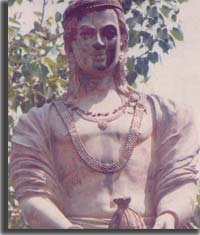
Accordingly, Sasanka treacherously murdered Rajya Vardhan.Harshavardhana was a great Indian Emperor, who ruled over the northern parts of India for a period 40 years in the history of India. The great empire was spread over the states of Punjab, Bengal, Odissi and the entire Indo-Gangetic plain, lying to the north of the Narmada River. He extended the kingdom from the Bay of Bengal to the Arabian Sea and from the Himlayas in the North to the Narmadha in the South.
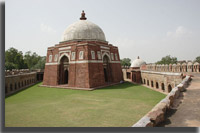
Initially the king Harsha Vardhana was the follower of Hindu religion. But later he became a Buddhist and followed Mahayana Buddhism. Still he continued to worship Lord Siva and Sun God, In A.D 644 he organized for a Buddhist Council at Kanauj in honor of Hiuen Tsang's visit to India which lasted for 23 days. Harsha Vardhana died in A.D.647 after which the kingdom was split into many small states.
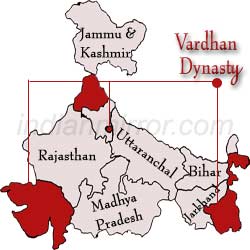
Place |
Delhi, Punjab, Bengal, Gujarat |
Period |
580-647 AD AD |
Language |
Sanskrit |
Religion |
Hinduism, Buddhism |
Rulers |
Harsha Vardhan, Prabhakar Vardhan, Rajyavardhana |
Administration
King Harsha Vardhana shifted his capital from Thaneswar to Kanauj. His next aggression faced was from Sasanka, the ruler of Bengal. He then defeated Sasanka and also took over Eastern Punjab (present day Haryana), Bengal, Bihar and Odissi. Later, he occupied Dhruvasena and Ganjam, a part of the modern Odissi State. He was a successful warrior as well as also a capable administrator. 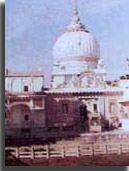
During his period, farmers paid 1/6th of their produce as taxes to the Government. Kingdom did not have forced labor. Punishments were not so harsh and there was no death penalty. Hospitals were well managed and maintained. Good roads were constructed with rest houses. True needy travellers were given good food and medical care, King Harsha was generous as he gave all his personal wealth and belongings in charity during the Prayag Assembly which was held once in 5 years. During Harsha's rule, Hiuen Tsang, the Chinese pilgrim, visited India. He stayed for about 14 years in India and traveled almost all parts of North India. The places he visited were Kanchipuram in the South, visited the courts of Harsha, the Chalukya rulers and the Pallava kings Hiuen Tsang was titled as the 'Prince of Pilgrims'.
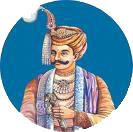
In 630 BC, Harshavardhana faced defeat at the hands of Pulakesi II, the Chalukya King of Vatapi, in Northern Karnataka. This defeat resulted in a truce between the two kings, with Harsha accepting River Narmada as the southern boundary for his kingdom. Kind Harsha left for the holy abode in the year 647 AD, after ruling over the Indian subcontinent for more than 41 years. The Vardhana Dynasty came to an end by the death of Harshavardhana. As he did not have any heirs, his empire rapidly collapsed into small states again.


